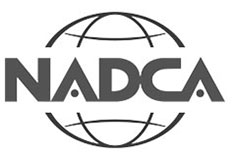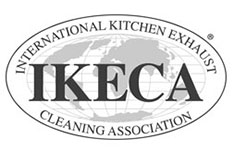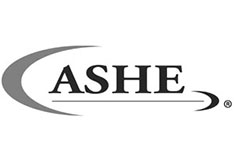Resources
Cochrane Ventilation has been providing comprehensive solutions to indoor environmental problems to New England’s leading private, public, and non-profit institutions since 1950. We provide cleaning and remedial services for HVAC systems, kitchen exhaust systems, and mold contamination — and consult on indoor air quality issues.
Below are highlights and sections of some important standards.
Additional Resources
NFPA 96
- Table 11.4 Schedule of Inspection for Grease Buildup
- Type or Volume of Cooking – Inspection Frequency
- Systems serving solid fuel cooking operations – Monthly
- Systems serving high-volume operations, such as 24-hour cooking, charbroiling, or wok cooking – Quarterly
- Systems serving moderate-volume cooking operations – Semiannually
- Systems serving low-volume cooking operations such as churches, day camps, seasonal businesses, or senior centers. – Annually
- 6.2.3.1 Grease filters shall be listed and constructed of steel or listed equivalent material.
- 6.2.3.2 Grease filters shall be of rigid construction that will not distort or crush under normal operation, handling, and cleaning conditions.
- 6.2.3.3 Grease filters shall be arranged so that all exhaust air passes through the grease filters.
- 6.2.3.4 Grease filters shall be easily accessible and removable for cleaning.
- 7.3.1 Openings shall be provided at the sides or at the top of the duct, whichever is more accessible, and at changes of direction.
- 7.4.1.1 On horizontal ducts, at least one 508 mm × 508 mm
(20 in. × 20 in.) opening shall be provided for personnel entry. - 7.4.1.2 Where an opening of the size specified in 7.4.1.1 is not possible, openings large enough to permit thorough cleaning shall be provided at 3.7 m (12 ft) intervals.
- 7.4.2.2 Where personnel entry is not possible, adequate access for cleaning shall be provided on each floor
- 8.1.1.1 Approved up blast fans with motors surrounded by the airstream shall be hinged, supplied with flexible weatherproof electrical able and service hold-open retainers, and listed for this use.
- 7.4.3.2 Access panels shall have a gasket or sealant that is rated for 815.6ºC (1500ºF) and shall be grease tight.
- 11.6.1 Upon inspection, if the exhaust system is found to be contaminated with deposits from grease-laden vapors, the contaminated portions of the exhaust system shall be cleaned by a properly trained, qualified, and certified person(s) acceptable to the authority having jurisdiction.
- 11.6.2* Hoods, grease removal devices, fans, ducts, and other appurtenances shall be cleaned to remove combustible contaminants prior to surfaces becoming heavily contaminated with grease or oily sludge.
Reproduced with permission from NFPA® 96-2017: Standard for Ventilation Control and Fire Protection of Commercial Cooking Operations, Copyright© 2016, National Fire Protection Association. This material is not the complete and official position of the NFPA on the referenced subject, which is represented only by the standard in its entirety which can be obtained through the NFPA web site at www.nfpa.org.
NFPA 96
- Table 11.4 Schedule of Inspection for Grease Buildup
- Type or Volume of Cooking – Inspection Frequency
- Systems serving solid fuel cooking operations – Monthly
- Systems serving high-volume operations, such as 24-hour cooking, charbroiling, or wok cooking – Quarterly
- Systems serving moderate-volume cooking operations – Semiannually
- Systems serving low-volume cooking operations such as churches, day camps, seasonal businesses, or senior centers. – Annually
- 6.2.3.1 Grease filters shall be listed and constructed of steel or listed equivalent material.
- 6.2.3.2 Grease filters shall be of rigid construction that will not distort or crush under normal operation, handling, and cleaning conditions.
- 6.2.3.3 Grease filters shall be arranged so that all exhaust air passes through the grease filters.
- 6.2.3.4 Grease filters shall be easily accessible and removable for cleaning.
- 7.3.1 Openings shall be provided at the sides or at the top of the duct, whichever is more accessible, and at changes of direction.
- 7.4.1.1 On horizontal ducts, at least one 508 mm × 508 mm
(20 in. × 20 in.) opening shall be provided for personnel entry. - 7.4.1.2 Where an opening of the size specified in 7.4.1.1 is not possible, openings large enough to permit thorough cleaning shall be provided at 3.7 m (12 ft) intervals.
- 7.4.2.2 Where personnel entry is not possible, adequate access for cleaning shall be provided on each floor
- 8.1.1.1 Approved up blast fans with motors surrounded by the airstream shall be hinged, supplied with flexible weatherproof electrical able and service hold-open retainers, and listed for this use.
- 7.4.3.2 Access panels shall have a gasket or sealant that is rated for 815.6ºC (1500ºF) and shall be grease tight.
- 11.6.1 Upon inspection, if the exhaust system is found to be contaminated with deposits from grease-laden vapors, the contaminated portions of the exhaust system shall be cleaned by a properly trained, qualified, and certified person(s) acceptable to the authority having jurisdiction.
- 11.6.2* Hoods, grease removal devices, fans, ducts, and other appurtenances shall be cleaned to remove combustible contaminants prior to surfaces becoming heavily contaminated with grease or oily sludge.
Reproduced with permission from NFPA® 96-2017: Standard for Ventilation Control and Fire Protection of Commercial Cooking Operations, Copyright© 2016, National Fire Protection Association. This material is not the complete and official position of the NFPA on the referenced subject, which is represented only by the standard in its entirety which can be obtained through the NFPA web site at www.nfpa.org.






